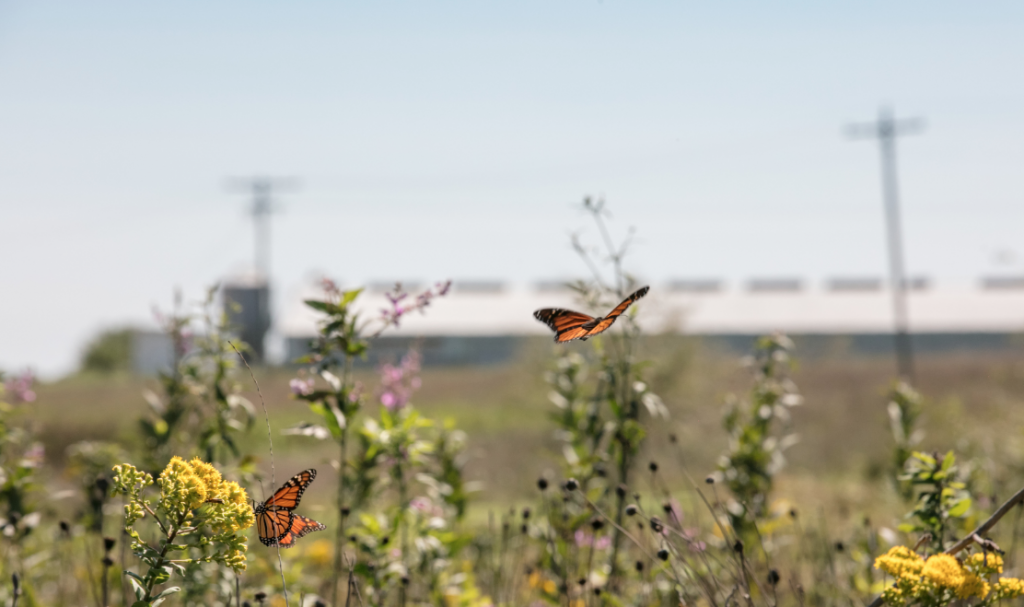Eastern monarch butterfly populations rebounded last year, largely thanks to favorable weather conditions during the butterflies’ 3,000-mile migration. To help make those increases permanent and reduce chances of an endangered species listing, we need to plant 1.5 million more acres of milkweed, native grasses and wildflower habitat on farms and ranches.
Farmers like Tim Richter, who manages a grain and hog operation in Iowa and Missouri, are stepping up provide monarchs with vital breeding and nectaring habitat.
I sat down with him to discuss what inspired him to restore monarch habitat, and to ask him what he wants other farmers to know about pollinator conservation.
What made you interested in monarch butterfly conservation?
The monarch butterfly migration is just amazing to me — how far they travel, that they can’t get very far without nectar sources, and that eating milkweed makes them toxic to other animals.
This species was once so abundant, and now the numbers are such that another devastating winter in Mexico could have a calamitous effect on the whole population. I live and farm in a region that is critical to the monarch’s survival, and I wanted to help.
What habitat restoration projects are you planning?
This September, I’m planting milkweed around hog barns on three sites, totaling about four acres. It’s a start. If it goes well, many of my neighbors are interested in doing the same thing, and we can scale up impact.
The great thing about monarch and pollinator habitat is that it can be tucked into relatively small parts of farms, like around barns or in fields that are an acre or less, hard to get to and not really worth planting.
Were the economics ever a concern?
I thought it was important to do this no matter what, but two things made the finances more favorable. First, EDF provided the seeds. Second, not mowing four acres will save us money.
Many government conservation programs apply only to crop fields, so I was glad to find a conservation project that works well with the hog production side of my business. I think the land around animal barns is a huge opportunity for adding pollinator habitat.
You’ve already implemented a lot of practices for soil health and water quality. How does pollinator conservation compare to those practices?
One of the big things is that monarchs are so visible. For many conservation practices, the results aren’t visible or it takes a long time to see them. I’m hoping that we’ll see a relatively quick, dramatic effect with more monarchs and pollinators appearing. Farmers like Tim Richter are finding ways to increase on-farm pollinator habitat while also improving bottom lines Share on X
Across the board, we’re looking at ways to make our operation more resilient to weather extremes through practices that boost water filtration and hold soil in place. If those practices can also provide pollinator habitat, that’s an added benefit.
Strip till, or tilling only a 10- to 12-inch band to plant the crop, has allowed us to get into the fields sooner after rain than in fields with full tillage. But the rain this spring has been relentless. I don’t know how you get ahead of that amount of water, and that’s why crop insurance safety nets are so important.
What have you told other farmers about monarchs?
Every spring, I host an appreciation dinner for my neighbors and business partners. At the dinner this year, I shared the monarch conservation projects I’m kicking off this fall, and you wouldn’t believe how positive the reception was and how many people want to do something similar on their land.
Farmers and technology were too effective at removing milkweed from the landscape. Now it’s our responsibility to add it back. We, as an agricultural community, have to own this.










